Posted 10 a.m. Monday, Jan. 28, 2013

MVAC Wins Award
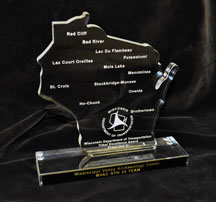
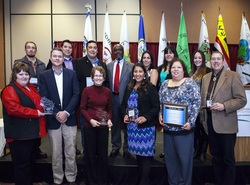
Archaeologist Kathy Stevenson recalls catching the first glimpse of an ancient village buried under Hwy. 35 in Onalaska. It was summer 2011, and building demolition for a large road construction project had begun. Amid the rubble, her team of researchers zoned in on some dark soil where a building foundation had just been removed. In a time long before garbage trucks, these dark circles in the earth were left behind by 400-700 year-old garbage pits or “pit features” — spots where former cultures threw their garbage. The seemingly mundane find to a layperson was a treasure trove to her team of archeologists. “What archaeologists study is the remains people left behind from their everyday life,” says Stevenson, projects director for the Mississippi Valley Archaeology Center. “From their ‘garbage’ we can tell what tools they made, the animal resources they used, what kind of crops they grew, the size of the site, how long they lived there … there is so much information you can tease out.”
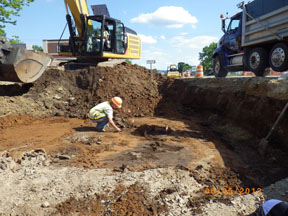
MVAC researchers knew they would learn more about the Oneota culture, which flourished in the La Crosse and Onalaska area from about A.D. 1300 to 1600. But the team was in for a surprise when the two pit features became six and eventually 500 as the workers began to peel away the roadbed in 2012, exposing remnants of the village, as well as human remains in more than 30 locations. “There was an entire, intact strip of village right under the street for about five blocks,” says Stevenson. “The ramifications were huge and so were the responsibilities — especially when dealing with human remains, where there is a strict process that needs to be followed.”
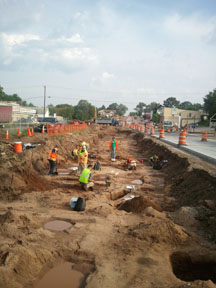
Yet, the archeologists were keenly aware that they were working in the middle of a busy downtown area with a construction timeline to follow. “When you have a road dug up in the middle of the city, you need to keep moving dirt,” says Chris Dahl, projects leader with the Department of Transportation. “I was fearful going into the project that it would be held up, but once I saw how the MVAC team got going on things —putting in long days and long hours — I saw they wanted to work with us to get the project done. They understood the time constraints we were dealing with.” Stevenson says communication — every day and sometimes multiple times each day — was key. They had to work with multiple stakeholders in the project including the DOT, Federal Highway Administration, Wisconsin Historical Society, City of Onalaska, Ho-Chunk Nation and construction contractors.
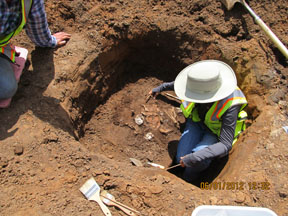
For MVAC’s commitment and dedication to the project, the team was recognized with a 2012 WisDOT Tribal Excellence Award during a ceremony on Dec. 11, 2012, at the WisDOT Tribal Transportation Conference. The award is for providing exemplary contributions and services to building and enhancing partnerships with the Wisconsin DOT and Wisconsin Tribal communities. “We are used to working with construction companies,” says Wendy Holtz-Leith, MVAC research archaeologist. “We are out in the hot sun, shoveling all day along with them.” MVAC staff as well as student crew members pitched in to keep the project moving, says Stevenson. They found items such as pottery, animal bones, food waste, burnt rock, deposits of ash from cooking fires and more. MVAC had suspected there would be artifacts in this location based on historic records, including newspaper accounts from as far back as the 1880s indicating people had found “Indian artifacts” and “Indian remains.”
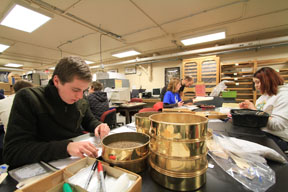
“When I first started working in this area about 30 years ago, we knew almost nothing about the area having these kinds of sites,” says Stevenson. “We keep building more of a picture of the cultures who lived here and who they were.” Excavation is only a small part of the archaeologist’s job. Now MVAC archeologists who worked on the project spend their days cleaning and cataloging artifacts found at the site. Above student workers catalog artifacts. Additional work will include writing reports and providing public lectures and displays.
